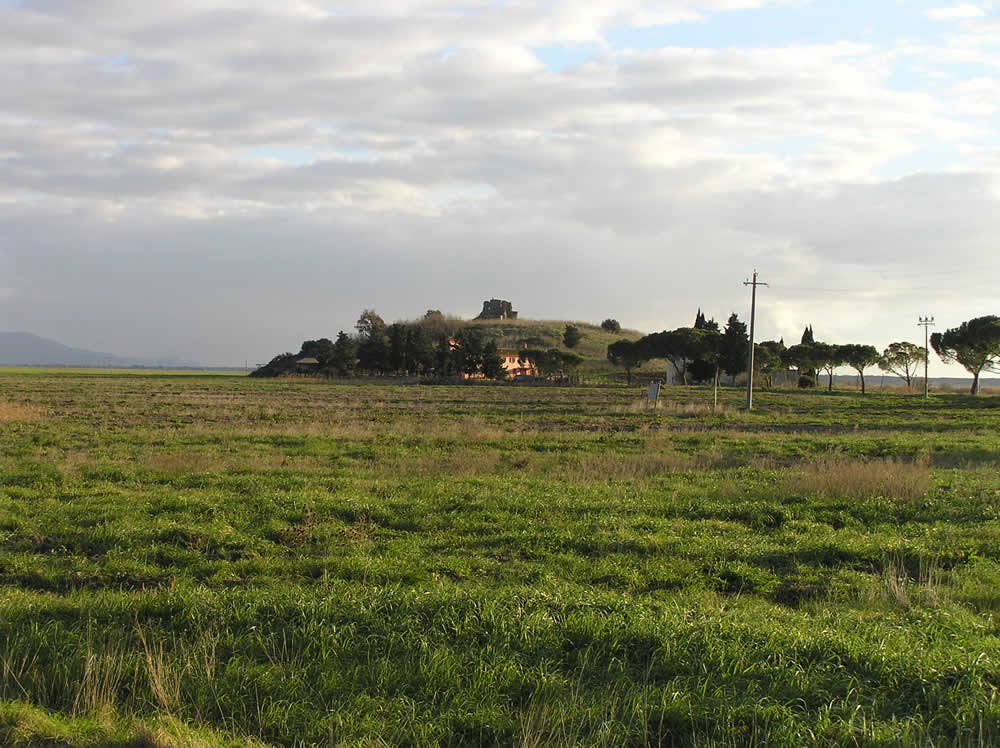Questo articolo è disponibile anche in:
![]() Français
Français ![]() Deutsch
Deutsch ![]() Español
Español ![]() Italiano
Italiano
Diaccia Botrona can be reached from Castiglione della Pescaia. Here, coming from Marina di Grosseto, just before the Giorgini bridge, turn right following the signs for Casa Ximenes or Casa Rossa. Another entrance to the area is from the Castiglionese provincial road, in the direction of Grosseto, up to the Ponti di Badia, where you turn right for the Clodia island. Here you enter the Reserve through a lane on the left side of the road.
The Diaccia Botrona Nature Reserve extends over a thousand hectares of land and is one of the most significant wetlands in Italy. The marshy area, the coastal tombolo and the pine forest behind the dunes are part of the reserve. It consists of a vast marshy environment, with an average depth of 30-40 cm, which communicates indirectly with the sea via canals. It constitutes a residual strip of Lake Prile, transformed into a swamp with the progressive closure of the tombolo that separated it from the sea and subsequently reclaimed. The Diaccia Botrona has a rare ecosystem, which hosts an incredible variety of living beings, both plants and animals.

The avifauna represents the most interesting component of the reserve. There are, in fact, about 200 species detected that alternate throughout the year, of which about 80 are nesting. Among the most important are the marsh harrier, the sheer harrier, the white heron, the osprey, the kite, the honey buzzard, the curlew, the little egret, the squacco heron, the real godwit, the purple heron, the bittern, the European roller and the crested cuckoo.
THE RED HOUSE (CASA ROSSA)
The Red House is located near Castiglione della Pescaia. Here, coming from Marina di Grosseto, just before Ponte Giorgini, turn right following the signs for Casa Ximenes or Casa Rossa which you reach after a few hundred metres. The Red House was built by Pietro Leopoldo I of Lorraine in 1765, in the plan of reclamation interventions directed by the engineer, Jesuit, astronomer and plumber Leonardo Ximenes. He had a canal built (the Canale Reale or Maestro) on the mouth of which he had a building erected, the Casa Rossa, with cataracts to regulate the outflow of water.
The building was erected between 1765 and 1767 and is supported by three arches where the cataracts were lowered over the canal, the complex represents a building-bridge which was used to regulate the outflow of water from the marsh towards the sea. The building masterfully restored in recent years, stands on a bridge with three arches, and represents the oldest and best preserved hydraulic castle in the Maremma. Between 1833 and 1835, when another canal was dug, the five-arch brick and travertine bridge was added.

THE CLODIA ISLAND
Isola Clodia can be reached from the Provinciale Castiglionese, in the direction of Grosseto, up to the Ponti di Badia, where you turn right for Isola Clodia. On a rounded hill are the ruins of a Roman villa (which the Clodi family had built in the 1st century BC on what was then an island near the shores of Lake Prile) and of an abbey Benedictine (erected around 1000). The ruins visible today consist of two walls built with an external lining of ashlars. To the west of the hill, traces of an access road remain.
Questo articolo è disponibile anche in:
![]() Français
Français ![]() Deutsch
Deutsch ![]() Español
Español ![]() Italiano
Italiano

